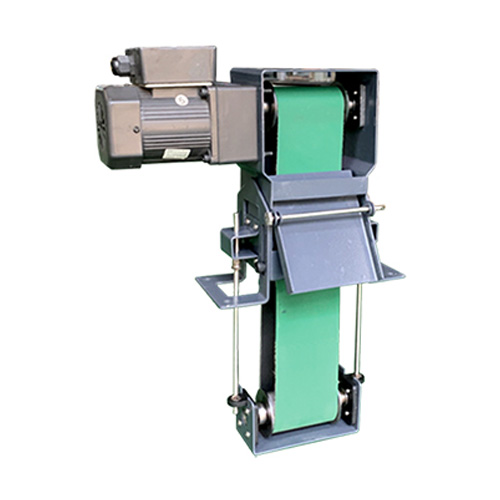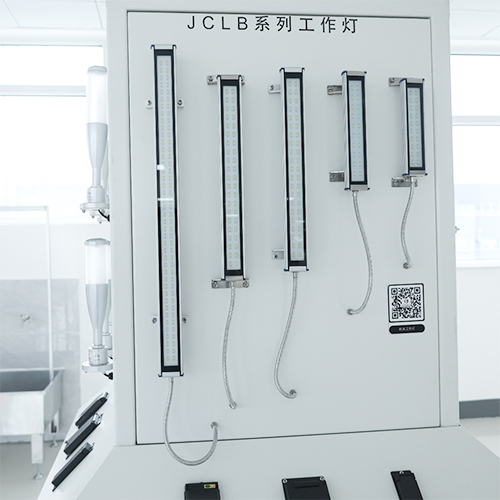-
WhatsAPP: +86 18706448138
-
Tengzhou, Shandong, China

How a CNC Machine Oil Mist Collector Boosts Safety
This blog explores how CNC machine oil mist collectors enhance safety, improve operational efficiency, and contribute to regulatory compliance.
Table of Contents
Introduction

In the fast-paced world of manufacturing, CNC (Computer Numerical Control) machines are the backbone of precision machining, enabling the production of intricate components across industries like aerospace, automotive, and medical device manufacturing. However, these machines generate oil mist and smoke as byproducts when metalworking fluids (MWFs) interact with high-speed tools. This oil mist, if not properly managed, can create significant health, safety, and operational challenges in the workplace. A CNC machine oil mist collector is a specialized filtration system designed to capture and remove these airborne contaminants, ensuring a cleaner, safer, and more efficient work environment. This blog explores how CNC machine oil mist collectors enhance safety, improve operational efficiency, and contribute to regulatory compliance, ultimately transforming CNC machining environments.
Understanding Oil Mist in CNC Machining
What is Oil Mist?
Oil mist forms when metalworking fluids, used as coolants or lubricants during CNC machining processes like milling, drilling, or grinding, are atomized into fine droplets. These droplets, typically ranging from 0.5 to 10 microns, become airborne and can turn into oil smoke when exposed to high temperatures. Without proper control, oil mist disperses throughout the shop, settling on surfaces and posing risks to workers and equipment.
Sources of Oil Mist in CNC Operations
Oil mist is primarily generated during high-speed machining processes where fluids interact with rapidly rotating tools. Common sources include:
- Milling and Turning: High-speed cutting generates heat, causing fluids to atomize.
- Grinding: Abrasive processes produce fine mist particles.
- Drilling: High-pressure coolant systems create aerosolized droplets.
These processes, while essential for precision, contribute to air quality challenges that require effective solutions like a CNC machine oil mist collector.
The Health Risks of Oil Mist Exposure

Prolonged exposure to oil mist can lead to serious health issues for workers. Inhalation of oil mist particles, especially those smaller than 1 micron, can cause respiratory problems, including bronchitis, asthma, and even long-term conditions like lung cancer. Skin contact with oil mist may result in dermatitis, while mist settling on floors creates slip hazards, increasing the risk of workplace accidents. By capturing these harmful particles, a CNC machine oil mist collector significantly reduces these health risks, fostering a safer working environment.
How CNC Machine Oil Mist Collectors Work
Core Mechanisms of Mist Collection
A CNC machine oil mist collector operates by drawing contaminated air through a series of filtration stages. Common technologies include:
- Centrifugal Separation: Uses spinning rotors to separate heavier mist particles from the air.
- Media Filters: Trap particles in porous materials, requiring periodic cleaning or replacement.
- Electrostatic Precipitation: Charges particles to attract and capture them, effective for submicron droplets.
- HEPA Filtration: Provides high-efficiency filtration for the smallest particles, often used in final stages.
The filtered air is then released back into the shop or exhausted, while collected oil can often be drained for reuse, enhancing sustainability.
Types of CNC Machine Oil Mist Collectors
There are two primary types of collectors:
- Primary Control Collectors: Mounted directly on CNC machines to capture mist at the source, ideal for enclosed systems.
- Secondary Control Collectors: Ceiling-mounted or standalone units that address ambient mist in larger shops.
Each type is designed to suit specific machining environments, ensuring flexibility and efficiency.
Key Benefits of Using a CNC Machine Oil Mist Collector
Enhancing Worker Safety
A CNC machine oil mist collector drastically reduces airborne contaminants, minimizing respiratory and skin-related health risks. By maintaining cleaner air, these systems create a safer workplace, reducing absenteeism and improving employee morale.
Protecting CNC Machine Components
Oil mist buildup on machine parts can lead to corrosion, clogged filters, and electronic failures. A CNC machine oil mist collector prevents this by capturing mist before it settles, extending machine lifespan and reducing maintenance costs.
Improving Product Quality
Oil mist settling on workpieces can cause defects, leading to higher rejection rates. By maintaining a clean machining environment, a CNC machine oil mist collector ensures higher-quality outputs, meeting stringent industry standards.
Reducing Environmental Impact
Effective mist collection reduces the release of harmful particles into the atmosphere, supporting environmental sustainability. Many collectors also allow for the recycling of captured fluids, minimizing waste.
CNC Machine Oil Mist Collector Specifications Table
The following table outlines key specifications to consider when selecting a CNC machine oil mist collector for your shop:
| Feature | Description |
|---|---|
| Airflow Capacity | Ranges from 170 to 7050 CFM, depending on machine size and mist volume. |
| Filtration Efficiency | Up to 99% for particles as small as 0.3 microns, meeting OSHA and NIOSH standards. |
| Filter Types | Centrifugal, media, electrostatic, or HEPA, often combined in multi-stage systems. |
| Mounting Options | Machine-mounted, ceiling-hung, or standalone for flexible installation. |
| Noise Level | Typically 65 dBA or lower for quiet operation in shop environments. |
| Maintenance Requirements | Washable or replaceable filters, with intervals from monthly to annually. |
| Compliance Standards | Meets OSHA, NIOSH, and ISO air quality requirements. |
This table provides a snapshot of what to look for when choosing a system tailored to your CNC machining needs.
Regulatory Compliance and CNC Machine Oil Mist Collectors
Meeting OSHA and NIOSH Standards
Workplace safety regulations, such as those set by OSHA and NIOSH, limit oil mist exposure to 5 mg/m³ over an 8-hour workday. A CNC machine oil mist collector ensures compliance by reducing airborne mist to levels well below these thresholds, avoiding fines and protecting worker health.
Global Environmental Regulations
In addition to worker safety, environmental regulations in many countries require the control of industrial emissions. By capturing oil mist before it escapes into the atmosphere, these collectors help shops meet stringent environmental standards, contributing to a greener operation.
Operational Efficiency Gains with CNC Machine Oil Mist Collectors
Reducing Downtime
Oil mist buildup can clog cooling systems, leading to machine overheating and downtime. A CNC machine oil mist collector minimizes these issues, allowing for uninterrupted production and increased output.
Lowering Maintenance Costs
By preventing oil mist from accumulating on machine components, these collectors reduce the frequency and cost of maintenance. Clean machines operate more efficiently, saving on repair and replacement expenses.
Enhancing Shop Cleanliness
Oil mist settling on floors, walls, and lighting creates housekeeping challenges and safety hazards. A CNC machine oil mist collector keeps the shop cleaner, reducing cleaning time and improving overall workplace aesthetics.
Choosing the Right CNC Machine Oil Mist Collector

Selecting the appropriate CNC machine oil mist collector depends on several factors:
- Mist Volume and Type: Consider the amount and type of mist (oil-based or water-based) generated by your machines.
- Machine Size and Setup: Ensure the collector’s airflow capacity matches your CNC machines’ output.
- Space Constraints: Compact, machine-mounted units are ideal for small shops, while larger systems suit expansive facilities.
- Maintenance Needs: Opt for systems with washable filters or low-maintenance designs to minimize costs.
Conclusion
A CNC machine oil mist collector is an indispensable tool for modern machining operations, offering a multifaceted approach to enhancing workplace safety, protecting equipment, and ensuring regulatory compliance. By mitigating health risks, reducing maintenance costs, and improving product quality, these systems contribute to a more efficient and sustainable shop environment. Their ability to capture harmful airborne particles not only safeguards workers but also extends the lifespan of valuable CNC machines, making them a wise investment for any manufacturing facility. Ready to improve your shop’s air quality and safety? Contact us today to explore the best CNC machine oil mist collector solutions for your needs.
FAQ
What is a CNC machine oil mist collector?
A CNC machine oil mist collector is a filtration system that captures and removes oil mist and smoke generated during CNC machining, improving air quality and safety.
Why is a CNC machine oil mist collector necessary?
It reduces health risks, protects machinery, ensures regulatory compliance, and enhances product quality by controlling airborne contaminants.
How often should filters be cleaned or replaced?
Filter maintenance varies by system and usage, typically ranging from monthly cleaning for washable filters to annual replacement for disposable ones.


